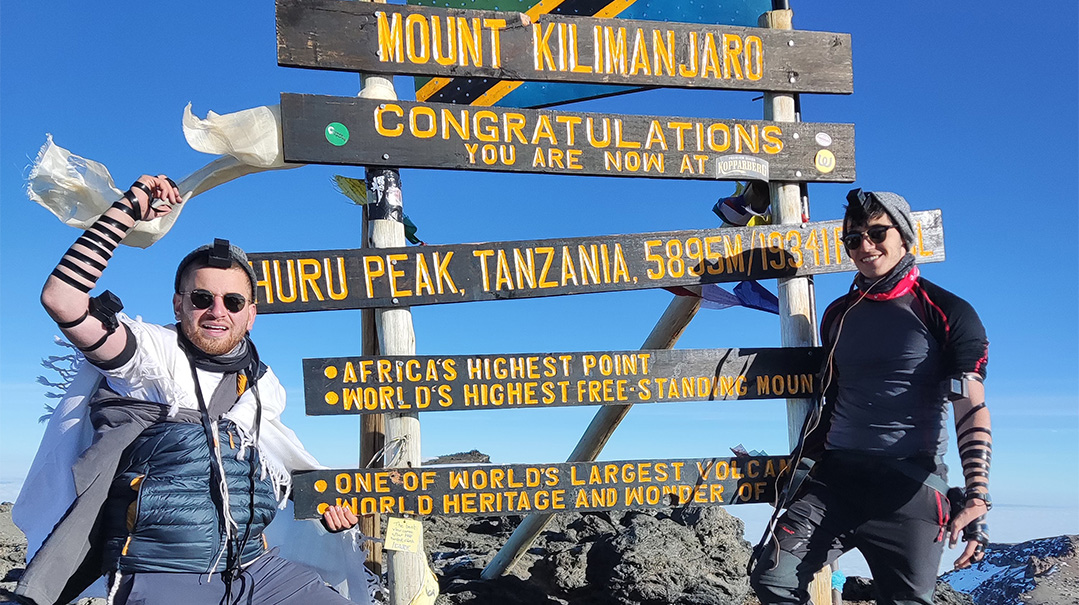Altitude Adjustment
| August 23, 2022A committed cadre climbs Kilimanjaro while never missing a minyan

Photos: GIFT
IN a world where extreme obstacle course challenges, 100-mile-plus bike rides and televised marathons with hours of original programming have become the new normal in fundraising, it was obvious to Rabbi Sandor Milun that he needed to aim high to run a successful campaign for the London-based chesed organization Give It Forward Today, better known as GIFT. Drawing on GIFT’s reputation for scaling mountains when it comes to persuading individuals to donate, Rabbi Milun, GIFT’s managing director, set his sights on none other than the world’s tallest free-standing peak — Africa’s Mount Kilimanjaro.
“It was early 2020, and I decided it was time to get GIFT on top of the world,” says South African-born Rabbi Milun, who joined the organization the year before, after more than a decade in campus kiruv. “Sometimes you have to do crazy things to get yourself known, and I felt we had to do something different, something that would be unique and would attract young people to our organization’s giving mindset.”
Despite its reputation for extreme weather and its daunting height — 19,340 feet above sea level — in the world of mountain climbing, Kilimanjaro is known as a doable climb. While summiting “Kili” requires no special technical skills or professional climbing gear, it is a physically and mentally demanding endeavor necessitating determination and sheer will. The biggest challenges are the need to maintain a certain pace, and the reduced oxygen levels at the higher altitude. But that didn’t scare off Rabbi Milun or the nearly two dozen people who signed up for the 17-day expedition to Tanzania in 2020.
Still, he unexpectedly found himself facing an obstacle that loomed even larger than Kilimanjaro: Covid.
With no other alternative, Rabbi Milun pushed off the trip for a full year, rescheduling for Kili’s next optimal climbing season in June 2021. But when the pandemic reared its head once again, it meant another full-year postponement. Nothing happens even a minute before it’s supposed to, and in the end he needed another year to meticulously plan the epic event.
Oops! We could not locate your form.







